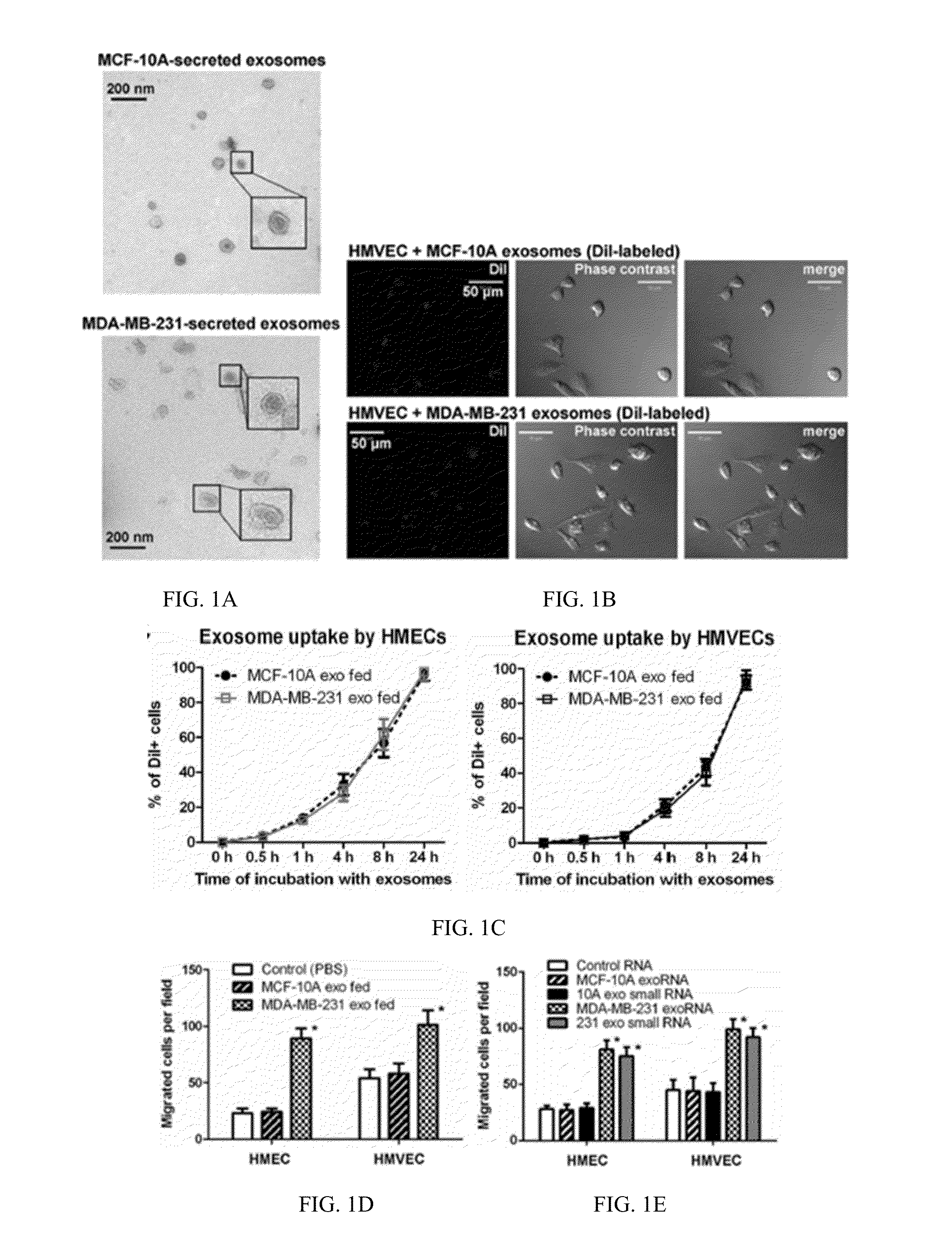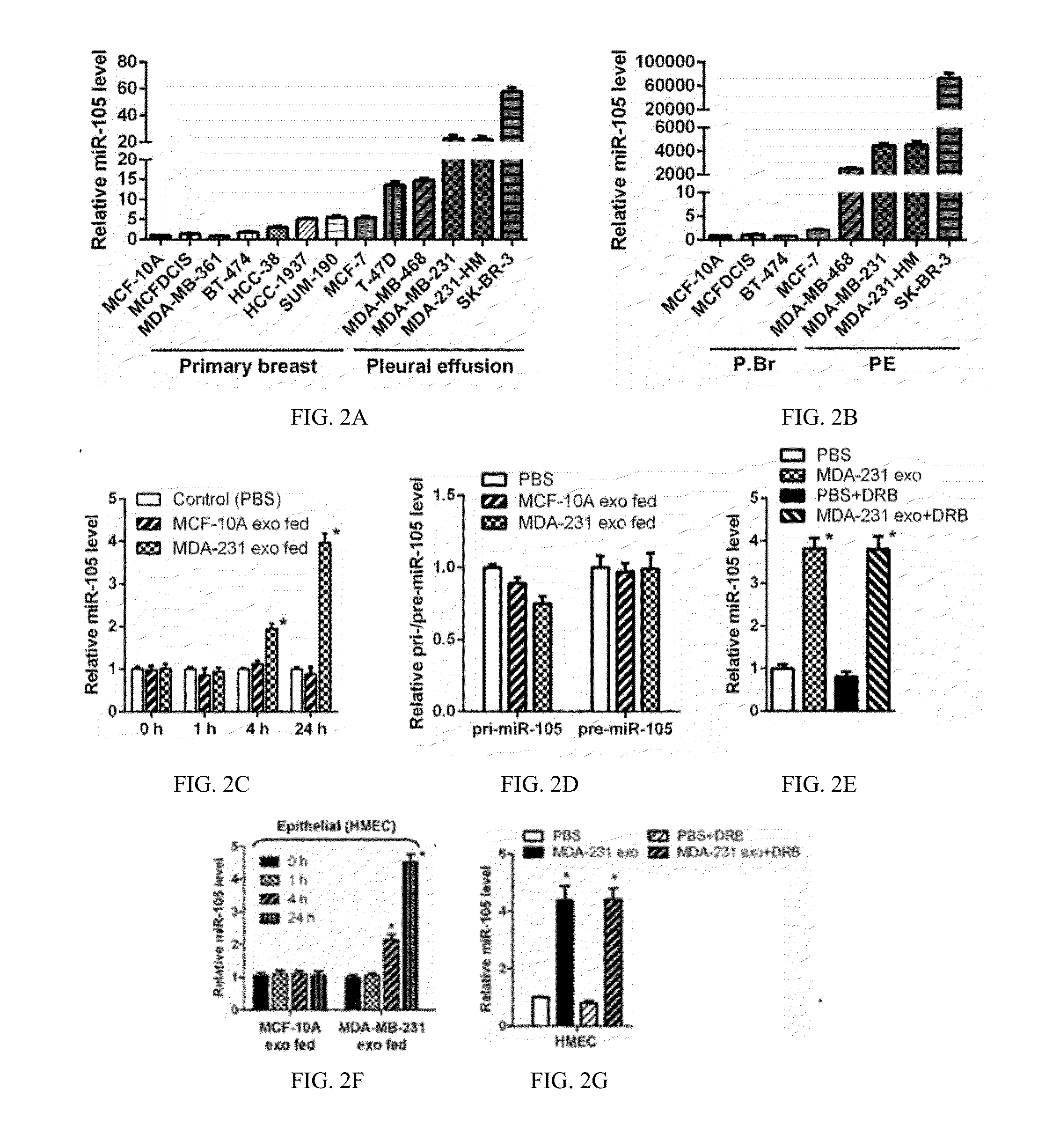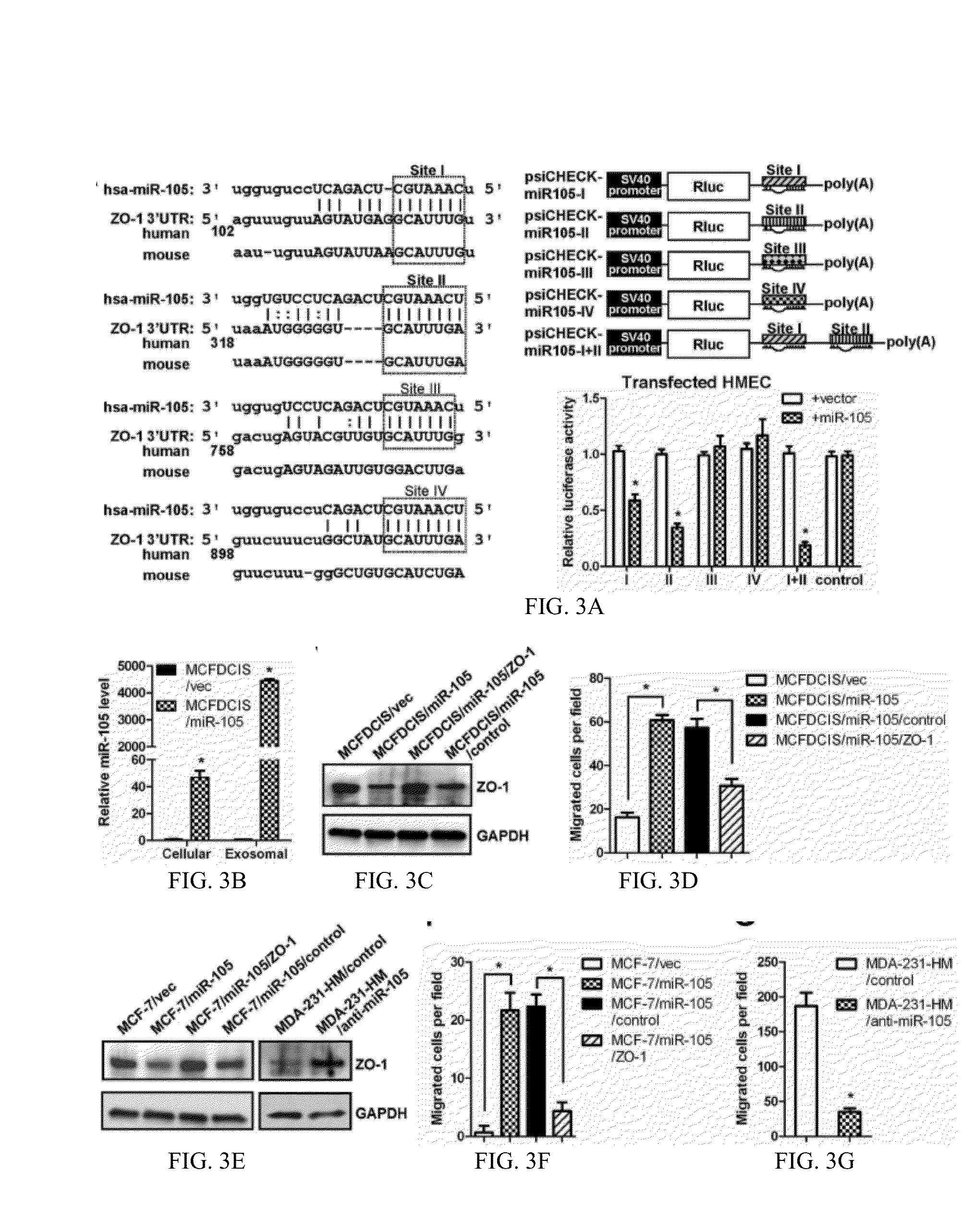Methods and compositions for treatment of breast cancer
a technology for breast cancer and compositions, applied in the field of methods and compositions for breast cancer treatment, can solve the problems of negative regulation of gene expression, degradation or translation blockade of the mrna,
- Summary
- Abstract
- Description
- Claims
- Application Information
AI Technical Summary
Benefits of technology
Problems solved by technology
Method used
Image
Examples
example 1
Cancer-Derived miR-105 Promotes Tumor Invasion and Destroys the Natural Barriers Against Metastasis
[0156]Metastasis is the leading cause of mortality in cancer patients. For breast cancer (BC), nearly 50% of patients treated with chemotherapeutic and / or hormonal agents develop distant metastatic disease (Nicolini et al., Biomed Pharmacother., 60:548-556 (2006); Rubens, Int. J. Clin. Pract. 55:676-9 (2001)); these patients face a median survival of 1-2 years and a 5-year survival rate of only ˜20% (Yardley, Clin. Breast Cancer, 10:64-73 (2010)). Therefore, there is need to develop predictive or early diagnostic markers for metastasis and to elucidate the molecular mechanisms of metastasis that would allow development of efficient treatment options. In the “seed and soil” hypothesis for metastasis (Paget, Lancet, 133:571-3 (1989)), migratory tumor cells leave the primary tumor through intravasation, disseminate throughout the body via the circulation, and eventually engraft in a dista...
example 2
De Novo Sequencing of Circulating miRNAs Identifies Novel Markers Predicting Clinical Outcome of Locally Advanced Breast Cancer
[0188]Breast cancer (BC) is the most common cancer among females and a leading cause of cancer death worldwide. Current clinical decision-making for BC treatment relies on tumor characteristics and therapeutic targets including the estrogen receptor (ER), progesterone receptor (PR), and human epidermal growth factor receptor 2 (HER2). Chemotherapy is given in the neoadjuvant and adjuvant settings to patients with locally advanced / high-risk primary BC as treatment for metastatic BC leading to life-threatening parenchymal disease, or to treat endocrine resistant (ER / PR-negative) metastatic BC (Guarneri V, Conte P: Oncologist 2009, 14:645-656; Guarneri V, et al., Cancer Lett 2007, 248:175-185). Neoadjuvant chemotherapy (NCT) is increasingly being used for initial treatment of locally advanced and inflammatory BCs. Pathologic complete response (pCR), defined as ...
example 3
Breast Cancer-Secreted miR-122 Regulates Glucose Allocation in Niche Cells to Promote Cancer Progression and Metastasis
[0212]Reprogrammed energy metabolism to fuel rapid cell growth and proliferation is an emerging hallmark of cancer. Unlike normal cells, most cancer cells use aerobic glycolysis with reduced mitochondrial oxidative phosphorylation for glucose metabolism even when oxygen is sufficient. This phenomenon, known as the “Warburg effect”, is believed to favour the uptake and incorporation of nutrients needed to produce a new cell. To compensate for the compromised ATP production caused by this metabolic switch, cancer cells often adopt mechanisms to increase glucose uptake and utilization. One mechanism involves the regulation of glucose transporters, among which GLUT1 is responsible for basal levels of glucose uptake in all cells (Zhao, F. Q. and Keating, A. F. Curr Genomics 8, 113-128 (2007)). GLUT1 can be regulated by numerous pathways such as the PI3K / Akt / mTOR pathway ...
PUM
| Property | Measurement | Unit |
|---|---|---|
| Level | aaaaa | aaaaa |
Abstract
Description
Claims
Application Information
 Login to View More
Login to View More - R&D
- Intellectual Property
- Life Sciences
- Materials
- Tech Scout
- Unparalleled Data Quality
- Higher Quality Content
- 60% Fewer Hallucinations
Browse by: Latest US Patents, China's latest patents, Technical Efficacy Thesaurus, Application Domain, Technology Topic, Popular Technical Reports.
© 2025 PatSnap. All rights reserved.Legal|Privacy policy|Modern Slavery Act Transparency Statement|Sitemap|About US| Contact US: help@patsnap.com



